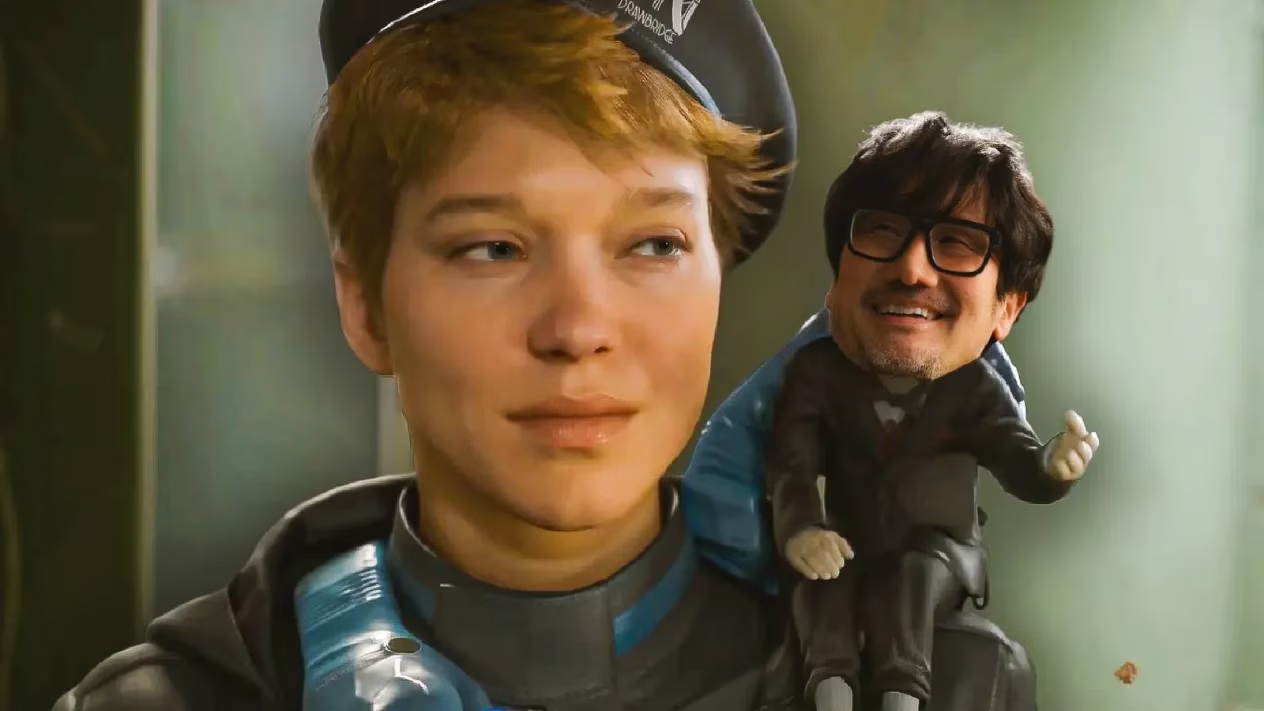Hideo Kojima returned to the Brazil Game Show after eight years, captivating fans with deep insights into Death Stranding 2. This visit, part of the game's World Strand Tour, allowed him to reconnect with Latin American audiences, sharing an intimate hour-long discussion that delved into the game's themes, characters, and real-world influences. One couldn't help but feel a sense of awe as Kojima spoke; his passion for storytelling is contagious, making even the most abstract concepts relatable. 😊 He reflected on how the series evolved from its predecessor, emphasizing that Death Stranding 2 isn't just a sequel—it's a mirror to our modern struggles with isolation and hyperconnectivity.

Kojima's approach to character diversity in Death Stranding 2 was profoundly personal. He didn't craft characters based on nationality but drew inspiration from Star Trek Enterprise, envisioning a team of varied origins uniting against challenges. "Since childhood, I've loved stories where people from all over fight together," he explained, his words resonating with a universal truth about human collaboration. This idea felt refreshingly authentic; in today's fragmented world, seeing such inclusivity in gaming is a breath of fresh air. He emphasized that Death Stranding 2's crew symbolizes hope, reminding players that diversity isn't just a checkbox—it's a strength that drives the narrative forward. 🌍
Fighting loneliness in a hyperconnected world remains central to the series. Kojima contrasted the first game's solitary journey with Death Stranding 2's new dynamics, where protagonist Sam Bridges finds companions aboard the DHV Magellan ship. Yet, he poignantly noted that even in family settings, loneliness persists—a sentiment that strikes a chord. "You work, support your family, and still feel alone at times," he said, his words echoing many players' own experiences. This theme isn't just game mechanics; it's a raw, emotional reflection on modern life. The Social Strand System, which connects players' actions across different versions of the game, was born from this paradox. Kojima admitted his team initially resisted it, questioning the use of 'Likes' as currency without tangible rewards. "In our online era, you're never truly alone, but solitude lingers," he mused. 😔 It's a system that cleverly mirrors social media's hollow connections, making one ponder how often our digital interactions feel empty.
A shift in tone marks Death Stranding 2, introducing more humor and absurd elements like a hovering coffin used as a surfboard. Kojima clarified this wasn't intentional but a response to players abandoning the first game due to its intense loneliness. However, he teased the sequel's provocative slogan: "Should we have connected?" This question hit hard; after all, in a post-pandemic world, we've all grappled with the downsides of overconnection. 🌪️ "Too much connection leads to fragmentation, like a puppet controlled by strings," Kojima warned, pointing to the game's logo change—a subtle yet powerful visual metaphor. It's a reminder that balance is key, and his insight feels eerily relevant in 2025, where digital overload is rampant. The narrative avoids traditional villains, focusing on antagonists with rich backstories. Kojima disliked how the first game's foe followed a predictable arc, so he aimed for depth over clichés. When describing scenes like Léa Seydoux's emotional breakdown in Death Stranding 2, his admiration shone through; witnessing such raw performances in games is rare and profoundly moving.
Casting plays a vital role, with actors like Norman Reedus bringing authenticity. Kojima praised Reedus's adaptability and their close bond, noting how Seydoux's scenes elevated the emotional weight. "Using renowned actors adds soul to characters," he explained, though it's a challenging process due to time constraints. This isn't about making movies; it's about infusing games with humanity. 😊 Key aspects of Death Stranding 2 include:
-
Character Depth: No one-dimensional villains; antagonists have compelling motivations.
-
Actor Contributions: Performances that capture raw emotion, as seen in Seydoux's tearful scene.
-
Visual Quality: Motion capture enhances realism, making every gesture count.
This blend of artistry and technology creates an immersive world that feels alive.
The pandemic heavily influenced Death Stranding 2, as Kojima openly shared his struggles during that time. "I was sick and isolated, questioning if remote connections would dominate forever," he confessed. His vulnerability was palpable; many of us recall that era's anxieties, and hearing it channeled into the game adds layers of meaning. Kojima stressed that developers can't escape their sociocultural context—players and creators alike are shaped by real-world events. "If Death Stranding 1 released post-pandemic, the story would differ," he observed, highlighting how timing alters perception. This interconnectedness between life and art is undeniable, and it's heartening to see games tackle such themes head-on.
Reflecting on Kojima's Brazil Game Show appearance, his message of connection and solitude comes full circle. Death Stranding 2 isn't just a game; it's a philosophical exploration of our times, inviting players to reflect on their own digital lives. As he reconnected with fans, the irony wasn't lost—discussing isolation while fostering community. 🤝 This journey from loneliness to nuanced connection encapsulates the human experience, proving that in 2025, Kojima's vision remains as relevant and inspiring as ever.